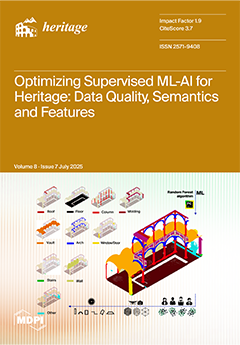Geoethics emphasizes responsible human interaction with the Earth, promoting ethical practices in the geosciences to ensure sustainability for current and future generations. UNESCO Global Geoparks (UGGps) are designated areas that support sustainable development by integrating geoconservation, geoeducation, and community engagement, thereby raising awareness
[...] Read more.
Geoethics emphasizes responsible human interaction with the Earth, promoting ethical practices in the geosciences to ensure sustainability for current and future generations. UNESCO Global Geoparks (UGGps) are designated areas that support sustainable development by integrating geoconservation, geoeducation, and community engagement, thereby raising awareness of geological heritage. This quantitative study employed an online questionnaire (
n = 798) to assess geoethical awareness among residents of all nine Hellenic UGGps, with the aim of profiling environmental engagement and perceptions. The results indicate a generally high level of geoethical awareness, with Sitia UGGp exhibiting the highest average mean score (
M− = 8.98,
SD− = 1.34), reflecting strong community support and effective outreach efforts. In contrast, Lavreotiki UGGp (
M− = 8.48,
SD− = 1.15) and Psiloritis UGGp (
M− = 8.33,
SD− = 1.36) scored lower in areas such as community engagement and geotourism, suggesting opportunities for targeted improvement. Regional differences suggest that management, visibility, and local context significantly influence public perceptions. Cluster analysis identified four respondent profiles: (a) highly engaged environmental stewards (28.7%), (b) supportive but selective advocates (40.5%), (c) moderately indifferent participants (26.9%), and (d) disengaged or critical respondents (3.9%). Demographic factors such as age, residence, prior visits to Hellenic UGGps, and education significantly differentiated these groups. Mapping geoethical awareness provides a valuable tool for assessing societal benefits and enhancing the governance of UGGps. Overall, the findings underscore the need to shift from an anthropocentric to a more geocentric worldview that prioritizes the well-being of both humanity and Earth’s systems.
Full article





